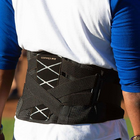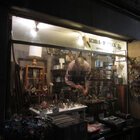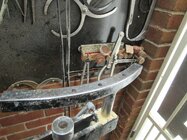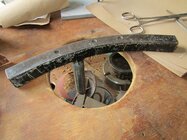Odie
Panning for Montana gold, with Betsy, the mule!
I've probably had ten back braces over the years to keep from straining my back with my fixed headstock Woodfast lathe. When I do my undercut rims, it gets especially hard on my back. I've been using this Copperfit X-back brace with its X configuration and stiff staves for about a month now, and it's the best brace I've had to date.
Just passing along what has been a great back support from someone who has had a difficult time with back issues while lathe turning.
=o=

Video at link:
 getxback.com
getxback.com
Just passing along what has been a great back support from someone who has had a difficult time with back issues while lathe turning.
=o=

Video at link:
Copper Fit X Back - Superior Back Support & Comfort
ntroducing Copper Fit® X Back Get Optimal Support with Breathable Comfort! Experience Dynamic Support and Unparalleled Stability with our innovative lower back brace. This advanced ergonomic design embodies a next-generation support system, offering full coverage and unmatched comfort, setting...



